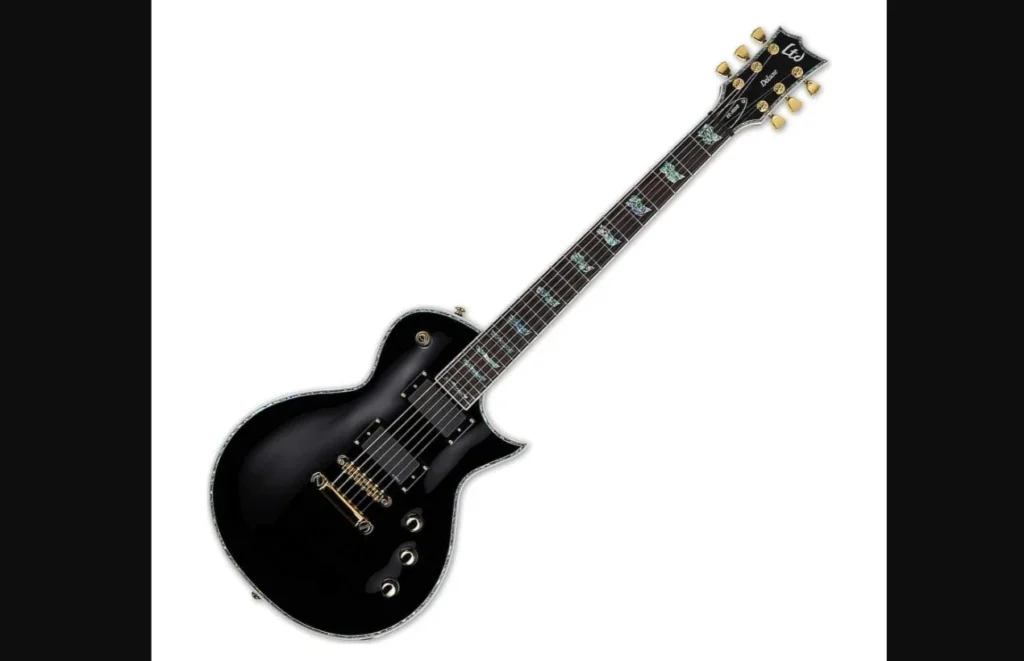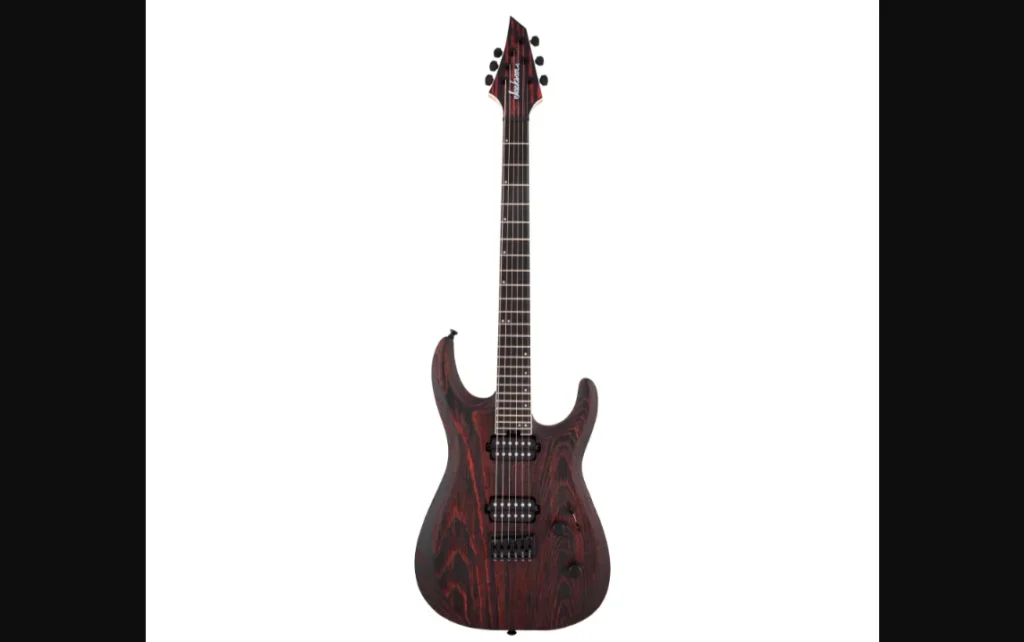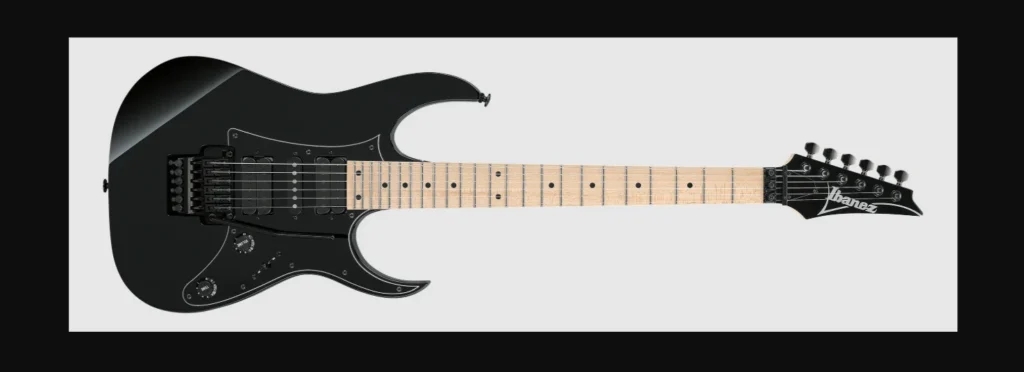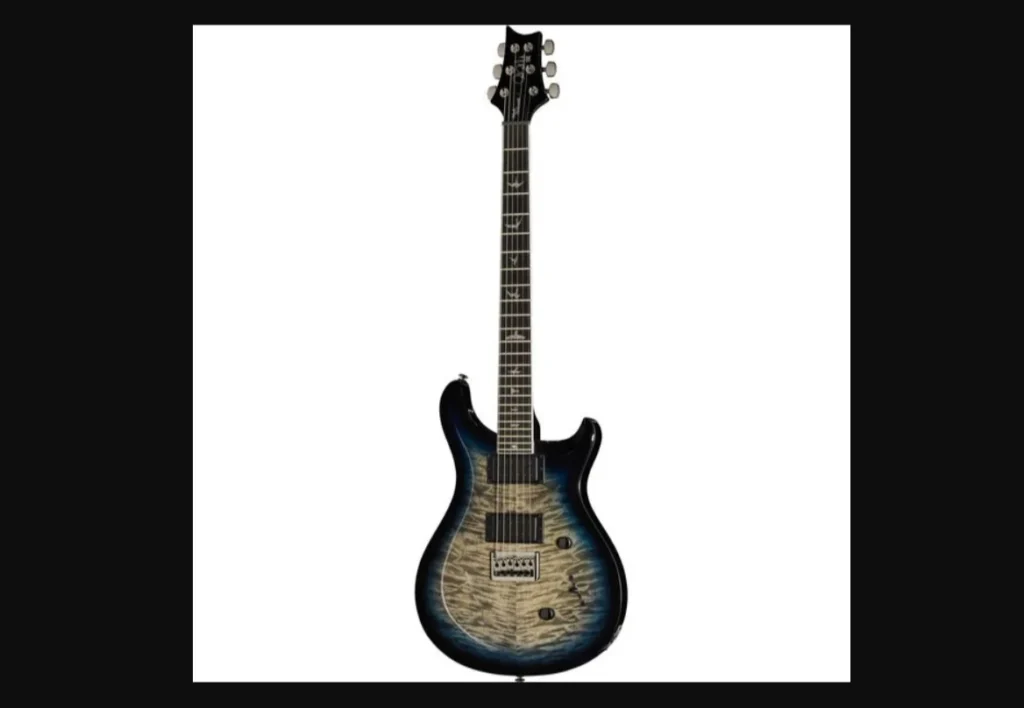Metal music demands precision, power, and unwavering reliability from your instrument. Whether you’re laying down crushing riffs in the studio or commanding the stage with thunderous solos, having the right electric guitar can make the difference between a good performance and an absolutely devastating one. The best electric guitars for metal combine aggressive pickup configurations, fast-playing necks, and rock-solid construction to handle everything from palm-muted chugging to lightning-fast lead work.
Finding the perfect metal guitar involves understanding the unique requirements of heavy music. You need instruments that can handle extended range tunings, deliver tight low-end response, and cut through dense mixes with clarity and aggression. Modern metal guitarists also require versatility, as the genre has evolved to encompass everything from brutal death metal to progressive metal odysseys.
This comprehensive guide examines five exceptional electric guitars that have earned their place in the metal hall of fame. From budget-friendly workhorses to professional-grade instruments, these guitars represent the pinnacle of metal-focused design and engineering. Each selection has been chosen based on pickup quality, neck playability, build construction, tonal versatility, and overall value proposition for metal musicians.
ESP LTD EC-1000 Deluxe

The ESP LTD EC-1000 Deluxe stands as one of the most revered metal guitars in the sub-$1000 category, delivering professional-grade features at an accessible price point. This single-cutaway beast features a mahogany body with a flame maple cap, creating a visual stunner that sounds as aggressive as it looks. The three-piece mahogany neck provides exceptional stability and sustain, while the ebony fingerboard offers smooth, fast playability that metal guitarists crave.
What truly sets the EC-1000 Deluxe apart is its pickup configuration featuring Seymour Duncan JB and Jazz humbuckers. These legendary pickups deliver the perfect balance of clarity and aggression, with the JB providing crushing high-gain tones and tight palm-muted chunks, while the Jazz pickup offers smooth lead tones for solos. The coil-tap functionality adds versatility, allowing players to access single-coil tones for cleaner passages or more articulate rhythm work.
The build quality of the EC-1000 Deluxe rivals guitars costing significantly more, featuring binding throughout, quality Grover tuners, and a TonePros locking bridge system. The neck profile strikes an excellent balance between comfort and speed, making it equally suitable for rhythm and lead playing. For metal musicians seeking a reliable, versatile instrument that can handle any subgenre, the EC-1000 Deluxe represents exceptional value and professional performance.
Schecter Hellraiser C-1

The Schecter Hellraiser C-1 has become synonymous with modern metal, offering active electronics and aggressive styling that perfectly complement heavy music. This guitar features a mahogany body with a quilted maple cap, creating stunning visual appeal that matches its powerful sound. The three-piece mahogany neck with ultra-access neck joint allows for effortless reach to the highest frets, making it ideal for shredding and complex lead work.
At the heart of the Hellraiser C-1’s sound are the EMG 81/85 active pickups, which have defined metal tone for decades. The EMG 81 in the bridge position delivers crushing high-gain tones with exceptional clarity and definition, making even the most complex riffs sound tight and articulate. The EMG 85 in the neck position provides warm, sustaining lead tones perfect for solos and melodic passages. The active electronics ensure consistent output levels and noise-free performance, crucial for high-gain applications.
The attention to detail on the Hellraiser C-1 is impressive, featuring abalone binding, Gothic cross inlays, and black chrome hardware that enhances its dark aesthetic. The TonePros locking bridge and Grover tuners provide excellent tuning stability, essential for heavy music that often employs alternate tunings. The thin C-shaped neck profile facilitates fast playing while maintaining comfort during extended sessions, making this guitar a favorite among professional metal musicians and serious enthusiasts alike.
Jackson Pro Series Dinky DK2

The Jackson Pro Series Dinky DK2 represents the evolution of the classic Dinky design, incorporating modern appointments while maintaining the aggressive character that made Jackson synonymous with metal. This guitar features a basswood body that provides excellent resonance and midrange punch, essential qualities for metal rhythm work. The bolt-on maple neck with compound radius fingerboard creates a playing experience that’s comfortable for chording and lightning-fast for soloing.
The DK2’s pickup configuration utilizes Seymour Duncan humbuckers that deliver versatile metal tones across the spectrum. The high-output pickups provide crushing distortion for rhythm work while maintaining clarity for complex chord voicings and intricate lead passages. The five-way pickup selector and tone controls offer extensive tonal shaping capabilities, allowing players to dial in everything from vintage metal crunch to modern high-gain assault.
Jackson’s attention to playability shines through in the DK2’s neck design, featuring a compound radius that transitions from comfortable rhythm playing positions to fast lead work territory. The jumbo frets and smooth neck finish facilitate effortless bending and vibrato, while the Floyd Rose Special tremolo system provides stable tuning and expressive pitch manipulation. For metal guitarists seeking the classic Jackson aesthetic with modern performance, the DK2 delivers professional results at an attractive price point.
Ibanez RG550

The Ibanez RG550 continues the legendary RG series tradition, offering the fast-playing characteristics and versatile electronics that have made Ibanez a metal staple. This guitar features a basswood body that provides balanced tones across the frequency spectrum, while the Wizard III maple neck delivers the incredibly thin profile that RG guitars are famous for. The jatoba fingerboard with jumbo frets creates an ideal platform for technical playing and expressive lead work.
The HSH pickup configuration featuring Quantum humbuckers and single-coil provides exceptional versatility for metal applications. The bridge humbucker delivers tight, aggressive tones perfect for palm-muted rhythms and powerful chord work, while the neck humbucker offers smooth, sustaining lead tones. The middle single-coil pickup adds brightness and clarity to clean tones and can be combined with either humbucker for unique tonal variations.
The Edge Zero II tremolo system represents Ibanez’s commitment to tuning stability and performance, featuring a double-locking design that maintains pitch accuracy even with aggressive tremolo use. The guitar’s lightweight construction and ergonomic design make it comfortable for extended playing sessions, while the premium appointments like matching headstock and shark tooth inlays add visual appeal. The RG550 exemplifies why the RG series has remained at the forefront of metal guitar design for decades.
PRS SE Mark Holcomb

The PRS SE Mark Holcomb signature model brings the quality and innovation of Paul Reed Smith guitars to the metal realm, designed in collaboration with Periphery guitarist Mark Holcomb. This guitar features a mahogany body with maple cap construction that provides excellent sustain and tonal balance, while the Wide Thin maple neck offers fast playability without sacrificing stability. The ebony fingerboard with bird inlays adds premium aesthetics and smooth feel under the fingers.
The heart of the Mark Holcomb model lies in its Seymour Duncan Mark Holcomb Alpha and Omega pickups, specifically designed for modern metal applications. These pickups deliver exceptional clarity and definition across the frequency spectrum, maintaining articulation even with extreme gain levels. The Alpha bridge pickup provides crushing rhythm tones with tight low-end response, while the Omega neck pickup offers smooth, singing lead tones perfect for melodic passages and solos.
PRS’s attention to detail shines through in the SE Mark Holcomb’s appointments, including a PRS tremolo bridge, locking tuners, and premium electronics throughout. The guitar’s versatile coil-tap functionality accessed via push-pull tone control adds single-coil voicings to the tonal palette, expanding its usefulness beyond metal into other musical territories. For guitarists seeking a modern metal instrument with premium build quality and innovative design, the SE Mark Holcomb represents exceptional value in the mid-price category.
Choosing Your Perfect Metal Guitar
Selecting the ideal electric guitar for metal involves considering several crucial factors that directly impact your playing experience and sound quality. Pickup configuration stands as perhaps the most critical element, as active pickups like EMGs provide consistent high-output performance, while passive pickups offer more dynamic response and tonal variety. The neck profile and scale length affect playability, with thinner necks facilitating fast technical passages and longer scale lengths providing improved string tension for lower tunings.
Build quality becomes paramount when considering the demands of metal music, including extended playing sessions, alternate tunings, and potentially aggressive playing styles. Guitars with quality hardware, including locking tuners, stable bridge systems, and premium electronics, ensure consistent performance and reliability. The choice between bolt-on and set-neck construction affects sustain and tone transfer, with each offering distinct characteristics that may suit different playing styles and tonal preferences.
Budget considerations should balance immediate needs with long-term goals, as investing in a quality instrument often provides better value over time. Consider visiting local music stores to test guitars hands-on, as personal preference plays a significant role in finding your perfect match. Reading reviews from other metal musicians and exploring instrument guides can provide valuable insights into real-world performance and reliability.
Amplification and Effects Considerations
The relationship between your guitar and amplification chain significantly impacts your final metal tone, making it essential to consider how different guitars interact with various amp types and effects pedals. High-output pickups may require different gain staging than lower-output alternatives, and understanding these relationships helps optimize your entire rig for maximum performance. Consider how your chosen guitar will integrate with your existing equipment or influence future gear purchases.
Effects pedals and processors can enhance or complement your guitar’s natural characteristics, with different pickups responding uniquely to distortion, modulation, and time-based effects. Active pickups typically provide consistent response to effects, while passive pickups may offer more dynamic interaction with analog pedals. Understanding these relationships helps create a cohesive sound that serves your musical vision effectively.
Recording considerations also influence guitar choice, as different instruments excel in various studio environments. Some guitars cut through dense mixes more effectively, while others provide better isolation and processing flexibility. Consider how your guitar choice aligns with your recording goals and the type of metal music you create, whether focusing on live performance or studio work.
Maintenance and Setup Tips
Proper maintenance ensures your metal guitar performs consistently and reliably over time, with regular setups addressing intonation, action, and pickup height adjustments. Metal music often demands precise intonation across the neck, making professional setups worthwhile investments for serious players. Learn basic maintenance skills like string changing, pickup height adjustment, and truss rod basics to keep your instrument in optimal condition.
Climate control affects wood instruments significantly, with temperature and humidity changes potentially causing neck movement, fret sprouting, and finish issues. Store your guitar in stable conditions and consider using humidifiers or dehumidifiers as needed for your local climate. Regular cleaning of hardware, fretboard conditioning, and electronic contact cleaning prevents performance issues and extends instrument life.
String choice impacts both tone and playability, with different gauges and materials offering varying characteristics for metal applications. Heavier gauge strings provide better tension for down-tuning and aggressive playing, while lighter gauges facilitate bending and fast playing techniques. Experiment with different string types and gauges to find combinations that complement your playing style and tonal preferences.
The Evolution of Metal Guitar Design
Modern metal guitar design continues evolving to meet the demands of contemporary heavy music, incorporating extended range instruments, ergonomic improvements, and innovative pickup technologies. Seven-string and eight-string guitars have become increasingly popular, offering extended range capabilities for modern metal composition and performance. These instruments require specific design considerations including neck width, scale length, and pickup configuration optimization.
Technological advances in pickup design have expanded tonal possibilities while maintaining the clarity and definition essential for metal applications. Modern pickup manufacturers offer increasingly sophisticated designs that address specific frequency response characteristics and output levels. Understanding these technological developments helps inform purchasing decisions and keeps players current with industry innovations.
The influence of prominent metal musicians continues shaping guitar design trends, with signature models often introducing innovative features that become industry standards. Following developments from influential metal guitarists and bands provides insight into emerging trends and technologies that may influence future instrument choices.
Conclusion
The five electric guitars featured in this guide represent the pinnacle of metal-focused design and engineering, each offering unique strengths that cater to different aspects of heavy music performance. From the versatile ESP LTD EC-1000 Deluxe to the modern innovation of the PRS SE Mark Holcomb, these instruments demonstrate how contemporary guitar design serves the evolving needs of metal musicians.
Success in metal music depends not only on technical proficiency but also on having the right tools for musical expression. The guitars discussed here provide the foundation for crushing riffs, soaring solos, and everything between, offering players the reliability and performance necessary for professional-level music creation. Whether you’re recording in the studio, performing live, or developing your skills at home, these instruments deliver the quality and features that serious metal musicians demand.
Remember that the perfect guitar ultimately depends on your individual playing style, musical goals, and personal preferences. Take time to explore these options, considering how each instrument’s characteristics align with your musical vision and technical requirements. With the right electric guitar as your weapon of choice, you’ll be equipped to create the heavy, powerful music that defines the metal genre for 2025 and beyond.
What pickup configuration is best for metal guitars?
For metal applications, high-output humbuckers are generally preferred due to their ability to handle extreme gain levels while maintaining clarity and definition. Active pickups like EMGs provide consistent output and noise-free performance, while passive pickups offer more dynamic response and tonal variety. Bridge humbuckers should provide tight low-end response for palm-muted riffs, while neck pickups should offer smooth sustain for lead work.
How important is scale length for metal guitars?
Scale length significantly impacts string tension and intonation, particularly important for metal music that often employs alternate tunings. Longer scale lengths (25.5″ and above) provide better string tension for down-tuning and improved intonation accuracy. However, shorter scale lengths may offer easier bending and more comfortable reach for players with smaller hands. Consider your tuning preferences when selecting scale length.
Should I choose active or passive pickups for metal?
Both active and passive pickups excel in metal applications, each offering distinct advantages. Active pickups provide consistent high output, excellent noise rejection, and uniform response across different amp settings. Passive pickups offer more dynamic response, broader tonal variety, and often better battery-free reliability. Consider your playing style, amp preferences, and maintenance comfort level when making this choice.
What neck profile works best for metal playing?
Metal guitarists typically prefer thinner neck profiles that facilitate fast technical passages and comfortable chord work. However, neck preference is highly individual, with some players preferring slightly thicker profiles for added sustain and stability. The key is finding a profile that feels comfortable for both rhythm and lead playing, as metal music often demands versatility across playing techniques.
How much should I spend on a metal guitar?
Quality metal guitars are available across various price ranges, from excellent budget options under $500 to professional instruments exceeding $2000. Focus on instruments that offer the features most important to your playing style and musical goals. Often, mid-range instruments ($600-$1200) provide the best balance of quality, features, and value for serious metal musicians. Consider your current skill level, performance requirements, and long-term musical goals when setting your budget.

